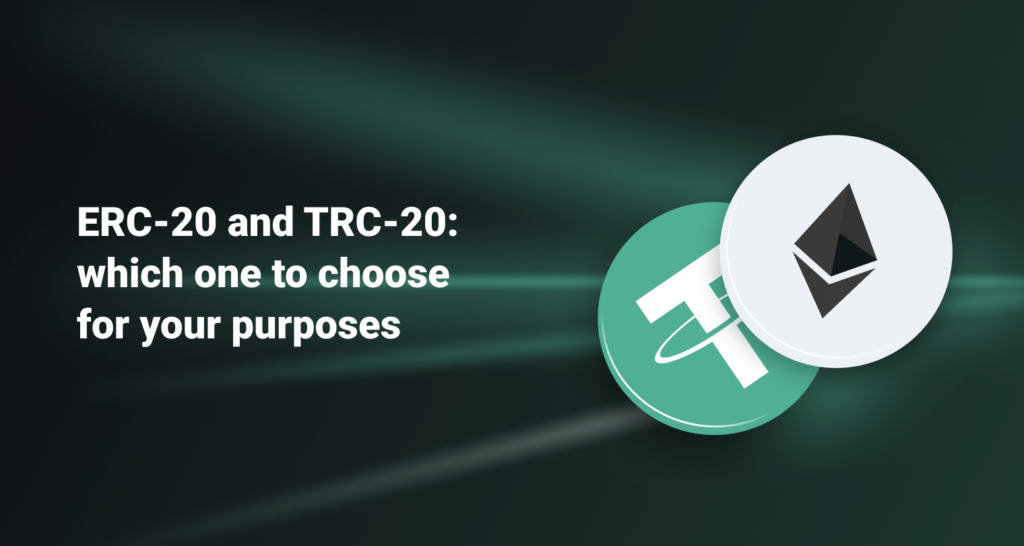
TRC20 vs ERC20-What’s the difference? Today, we’re discussing a very hot topic i.e. TRC20 vs ERC20
When we are depositing and withdrawing our funds we are always asked which network we would like to use.
Choosing the right network when sending our funds is very important because a permanent loss of funds can occur if the network chosen doesn’t match the deposit address network.
A popular use for these networks is sending or receiving the coin USDT.
USDT can be sent on either network.
Bitcoin uses Proof Of Work (PoW)
What’s the difference between ERC and TRC?
Other networks exist than just these 2 but they are 2 of the most popular, but what makes them different?
Ethereum uses the Consensus Protocol Proof Of Work (PoW)
Whereas,
Tron uses the Consensus Protocol Proof of Stake (PoS)
Both have the ability to have Smart Contracts and DAPPS built on them.
Tron supports more popular programming languages like JAVA and Python, so it attracts a larger group of coders and developers, whereas ETH only supports a new language called Solidity which has less developers ready to use them.
Proof Of Work:
(PoW) works by having all nodes solve a cryptographic puzzle, this puzzle is solved by miners and the first one to find a solution gets the miner reward.
PoW favors miners who have better and more mining equipment as the higher your hash rate the higher the chance that you’ll have to create the next block and thus receive the rewards.
This has forced the creation of Mining Pools where people come together and combine their hashing power to increase their chances of creating the next block; this very fact leads to the blockchain being more centralized.
If 51% of the hashing power is controlled by 1 person/company they can take control of the blockchain and approve fraudulent transactions.
Proof Of Stake:
(PoS) was developed after PoW in 2011, the creator of PoS thought it was stupid to make miners compete with each other as it caused many problems within the network.
Instead, a Validator not Miner, is chosen at random to validate the next block, in PoS blocks are minted or forged not mined.
To become a validator, a node/person has to deposit coins into the network as a stake, the more you stake the higher the chance you have in validating the next block.
If a validator approves a fraudulent transaction they’ll lose part of their stake
Reason for the difference in fees:
TRON can handle 2000 TX/s (Transactions Per Second)
TRON produces 3 Blocks Per Second
ETHEREUM can handle 25TX/s (Transactions Per Second)
ETHEREUM produces 1 every 15 seconds (0.66 per second)
As you can see it takes longer for blocks to be formed on the Ethereum network and thus the TX/s is a lot lower, this leads to Ethereum being more prone to congestion and thus the higher fees (see #GASFEE for further knowledge as to why gas fees are so high).
In comparison the TRC Network is essentially fee-less, with transactions of 100USDT to large sums of 10,000USDT having fees of only 1USDT, we can clearly see which is the better option.


